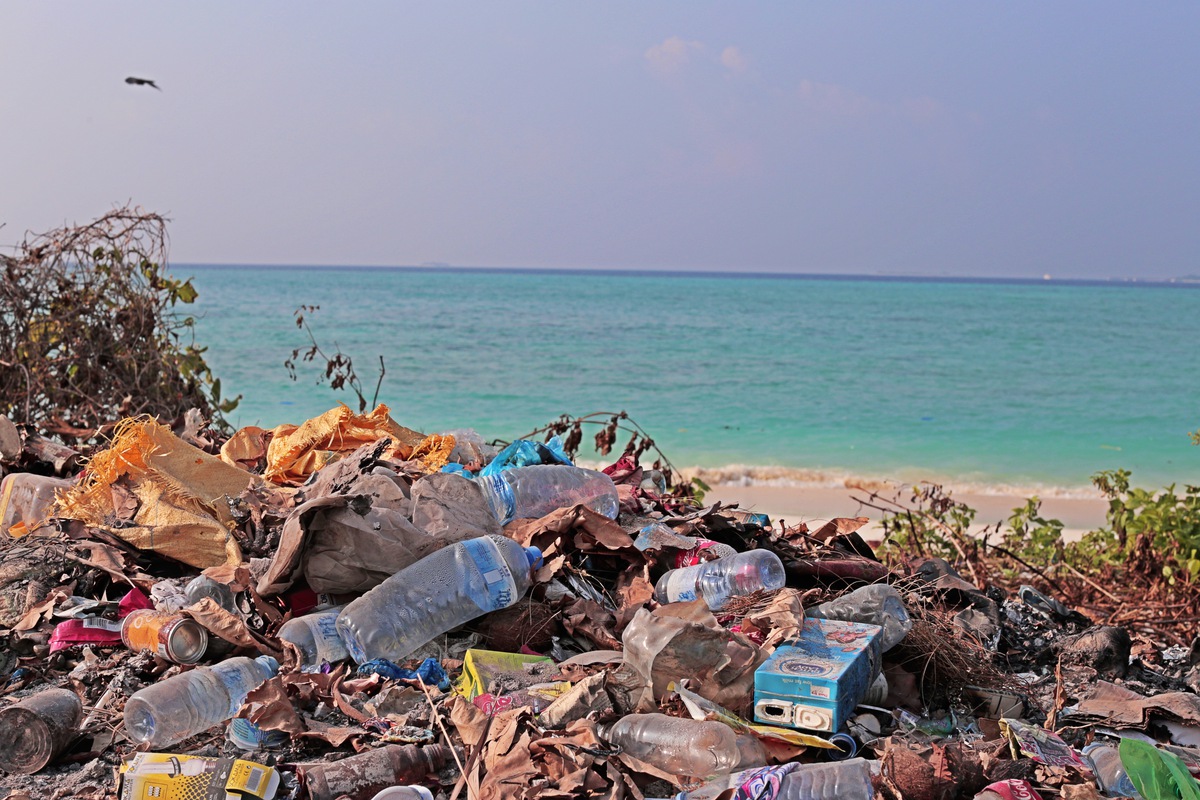The burdens disproportionately affect the vulnerable
Why UNDP is tackling the developmental dimensions of plastic pollution
June 20, 2024

The burdens of plastic production, consumption and management disproportionately affect poor and vulnerable communities.
Plastic pollution is not just a waste management issue, it affects the environment, economic development, human health, and social justice. Understanding the developmental dimensions of plastic pollution can shift our perspectives of cost-benefit analysis of plastics applications, and support countries to make sound decisions and develop policies and actions to sustain holistic development.
Directly or indirectly, plastic pollution is connected to almost all Sustainable Development Goals. Without curbing it, it is not possible to meet them.
Jeopardizing human health
According to the World Wildlife Fund, the average person could be ingesting a credit card worth of plastics, approximately five grams every week. The UN Environment Programme (UNEP) says more than 13,000 chemicals have been used in plastics and plastics products, and more than 3,000 of them are harmful. Many have not been tested. Studies have shown microplastics have penetrated to the deepest part of human bodies and are even found in placentas. Microplastics affect digestive, respiratory, endocrine, reproductive, and immune systems. It has been estimated that in 2018 plastic-induced health cost is US$250 billion.
Degrading marine ecosystems
Marine ecosystems provide food, transportation, carbon sequestration, climate stabilization, tourism and cultural heritage. Their value is estimated to be US$49.7 trillion per year. Our oceans have now become the world’s dumping site for the exponential growth of the use and waste of single use plastics and are quickly turning into plastic soup. At present, there is no systematic assessment of the accurate economic loss. Nonetheless, there are estimates that under 2011 levels;
- The annual cost in terms of reduced marine natural capital is US$3,300 – US$33,000 per tonne of plastic
- Marine plastic debris is responsible for the loss of US$0.5–2.5 trillion in the benefits derived from marine ecosystem services annually, representing a 1–5 percent decline.
It is extremely difficult to estimate the real cost of plastic pollution on oceans but one can be sure that it could be higher, as the estimated cost covers only the impact on marine natural capital.
Fueling the climate crisis
The impact starts with how plastics are made. Ninety nine percent of plastics come from fossil fuels, and given the exponential growth in plastic production and consumption, UNEP estimates that the greenhouse gas emissions could account for 19 percent of the total global carbon budget by 2040. The surge in plastic production and associated greenhouse gas emissions are incompatible with keeping the global temperature rise below 1.5°C.
Plastic pollution can also make it harder for communities to adapt to climate change. It damages coral reefs and the mangroves that serve to buffer from storm surges and rising sea levels. Plastic waste may also clog drainage systems and obstruct runoff, resulting in an increased risk of flooding.
Our soil is already affected by extreme weather, but microplastic pollution could add another challenge and reduce agricultural productivity. More studies are needed to assess the impact of plastic pollution on climate adaptation, but any impact on local livelihoods or ecosystems resilience can have dire consequences for rural communities.
Harming tourism
Plastic waste damages the aesthetic value of tourist destinations, resulting in decreased revenue. Visitors may be less likely to return due to high volumes of plastic litter. In South Korea, increased coastal waste caused a 63 percent drop in visitors at Geoje Island, a loss in revenue of US$29 – 37 million;
- A 1988 assessment showed marine debris on the US East Coast resulted in a loss of about US$379 to $598 million
- In 2008, the direct economic costs of marine debris on the tourism industry of the Asia-Pacific Economic Cooperation region was US$622 million, with a combined impact of US$1.265 billion that covered the costs to fishing and transportation
- Marine plastic pollution could lead to the loss of about US$13.7 million in Zanzibar.
Social and environmental injustice
The burdens of plastic production, consumption and management disproportionately affect poor and vulnerable communities.
While the rich benefit from the production and distribution of plastics, informal waste pickers, often from vulnerable populations, deal with the health hazards without proper protection. Many developed countries frequently export plastic waste to developing economies, worsening their burden. Urgent steps are required for a just transition, where adequate support is provided to vulnerable groups.
What can we do?
As the largest agency for major global environmental funds, including the Global Environment Facility and Green Climate Fund, UNDP has a large portfolio to fight against climate change, biodiversity loss and pollution from chemicals and waste. Dealing with plastic pollution requires a multi-dimensional and participatory approach, making it a key part of UNDP's agenda. Integrating plastic management into UNDP’s portfolio in related key issues can not only reduce plastic pollution, but also contribute to other SDGs.
With its Global Plastics Offer, UNDP is working with partners around the world to support countries to tackle plastic pollution.

 Locations
Locations





